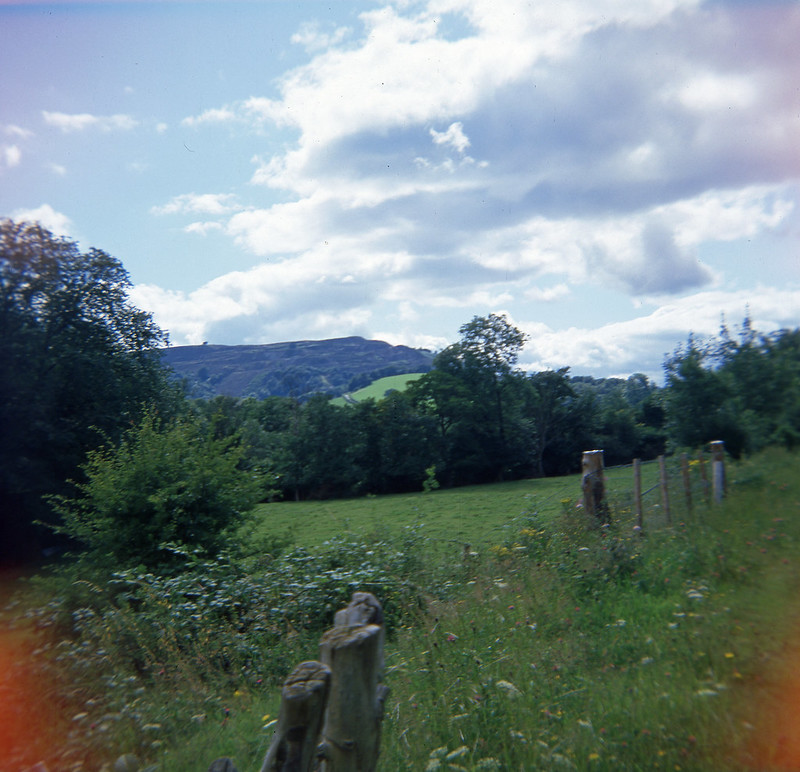Aside from your essay, effects are OK and fun to play around with but the novelty soon wears off, Sam. When I was your age (and a couple of years younger) we had those plastic effects filters that slid into a holder in front of the lens. There were loads of different kinds, from multi-pointed star effects for lights, refracting and multi-image prisms, soft colour centre spots, coloured graduated filters (with purple and tobacco being popular - yes, really!) and even a fairly unconvincing fake rainbow!
However, eventually it dawned on us that these often just distracted us from concentrating on the photo instead of the novelty effect; and to be kind the results were probably best described as being 'of their time'... or to be unkind, possibly just naff and tacky! So what advice would I have given my younger self? Forget the effects and concentrate really hard on trying to learn how to 'see' a photograph.
Sound a bit like a riddle? OK, take a look at two or three photos from your favourite photographer and ask yourself why does that photo work? Is it the framing? The light? The subject? The message it sends? The mood or feeling it creates? Learn to 'see' why it works. Then once you've done that, try to 'see' your own photos when you're out and about with your camera. It's not easy, as it's tempting to notice the makings of a good shot and just 'snap at it' it without thinking why it's caught your eye as having potential as a photo. Look and ask yourself why you thought it would make a good shot, then try to make sure you capture and/or major on those elements. Quite often when you actually look at it you'll find it won't work as a photo as the light is wrong or there's too much clutter to distract attention away from what you've 'seen'.
The real skill comes next, taking a photo of the image you've 'seen' in such a way that other people can 'see' that too when they look at your photo. Don't expect a great success rate though, even the pros may only get a couple of dozen really strong photos per year, and perhaps just two or three really great photos per year.
As for your photos, it looks like you've nailed the exposure, focusing and depth of field (unless the auto exposure was choosing the aperture rather than you?), however, I think the composition of the shots could be improved (always easier said than done! ). Take your third photo, by moving the model to the left a bit you'd have hidden most of the distracting road cone clutter in the background and you'd also have shown the 'Wait' sign, which adds context to the street scene. Also, by framing the shot more to the left you'd have shown more of the crossing (to add more context) and got rid of the traffic light box in the top right-hand corner. I like the remaining traffic light boxes above the model as they again add to the context of the scene.
Same with the first photo, the 'wait' sign isn't doing anything for the photo (apart from looking a bit like a backpack), so when you framed the shot it would probably have been better to either have hidden it or made a feature of it to add context? I appreciate that there might have been reasons why you didn't frame those shots differently, such as clutter, obstructions, danger of being run-over, etc. (like the first photo I posted, there was too much background clutter to get a good shot - ignore the framing in my second photo as it was just a snap taken when I was about 15, it was only included as it shows light leakage), but as I said, not every photo you visualise will work, so move on and find one that will, and learning to 'see' will help that. Also, I find that asking myself why a shot doesn't quite work (or work at all) is helpful too, so I can try to avoid that next time if that's possible (if I can remember at the time!). It's not easy with busy street scenes that are constantly changing, but once again, leaning to 'see' should help you cut through the chaff. Hope this is useful, best of luck and enjoy your photography.








 Portra160NC_2011-08-04_012.jpg
Portra160NC_2011-08-04_012.jpg


